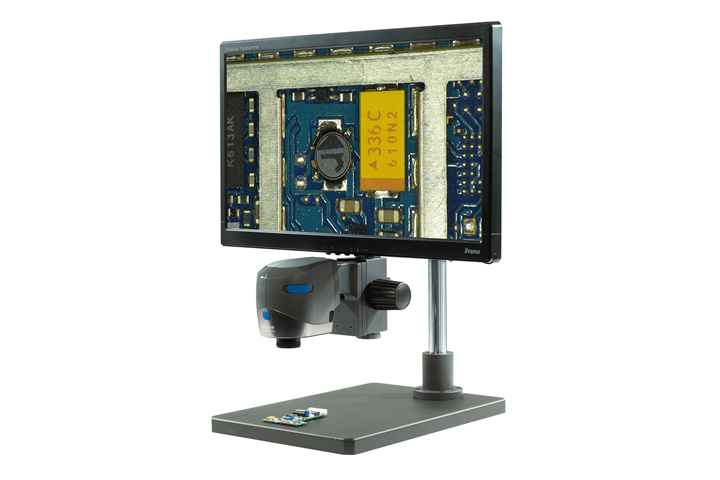Compact Digital Inspection Microscope Supports Immediate Information Capture
Vision Engineering debuts its standalone VE Cam system which enables users to perform quality inspections with a smaller footprint.

Photo credit: Vision Engineering
Vision Engineering highlights its VE Cam, a simple-to-use compact digital inspection microscope for a wide range of applications.
The VE Cam is a complete, standalone system for circuit board examination, PCB debug activities or for discovering imperfections, and to trace problems in a wide range of industrial applications. It is ideal for applications from goods-in quality inspection to shop floor inspection of turned parts, and suitable for manufacturing electronics, plastics, ceramics, mechanical engineering and additive manufacturing (AM).
VE Cam is available in two variants with differing fields of view (FOV), VE Cam 50 (50-mm FOV) and VE Cam 80 (80-mm FOV). Showcasing new and established features that are available on Vision Engineering’s EVO Cam ll, the VE Cam enables users to do more within a smaller footprint, according to the company, making it ideal for many routine inspection tasks.
The microscope does not require a PC, keyboard or mouse. With Wi-Fi screen sharing, results can be shared wirelessly to smart devices and displays with screen mirroring. Enhanced productivity features include 10 user programmable presets, six hotkeys for instant one touch access to most commonly used presets and a configurable interface which allows most commonly used settings to be shown direct on the screen.
RELATED CONTENT
-
Cleaning Molds: Part II
Even though hand cleaning will never be completely eliminated, ice blasting is an alternative cleaning method that can effectively reduce cleaning time and cost.
-
A Look at Mold Texturing
Laser texturing, if understood and appreciated, can open up the door to endless possibilities in texturing, according to this texture house.
-
Understanding the Effect of Pressure in the Cavity
Molders offer a moving target for moldmakers to adjust to by producing parts with different cavity pressures.










